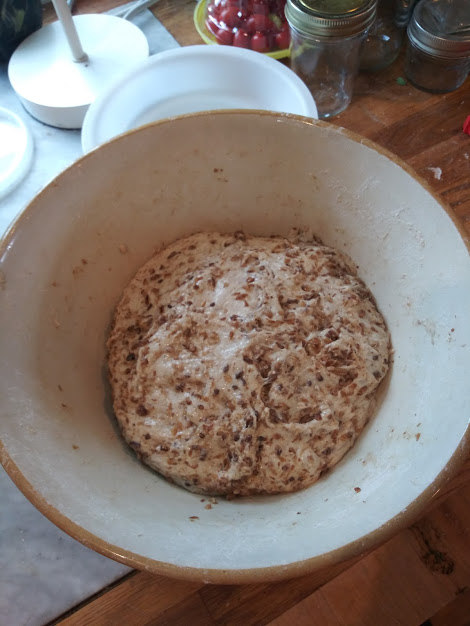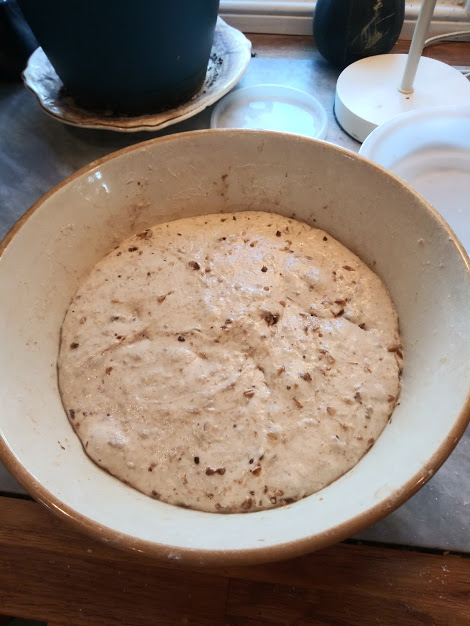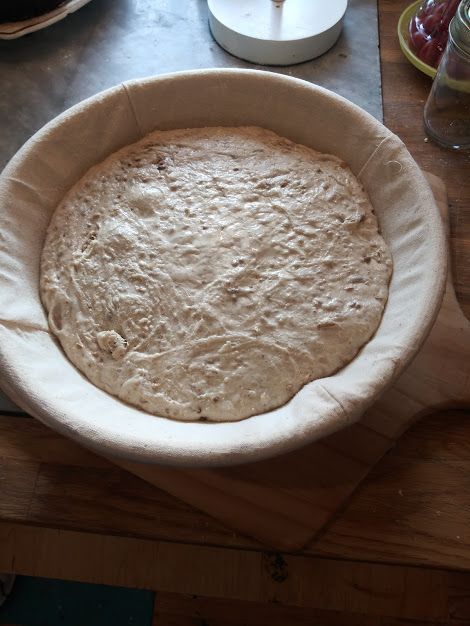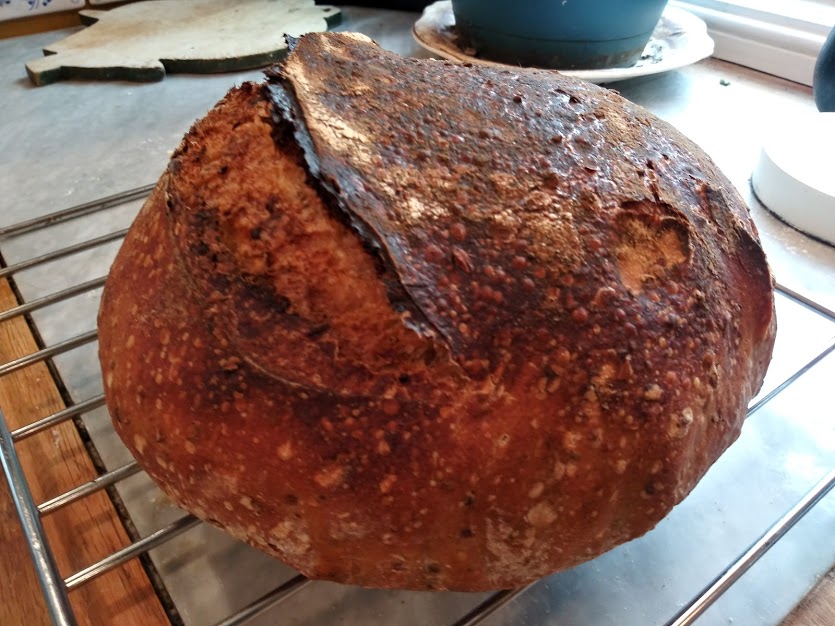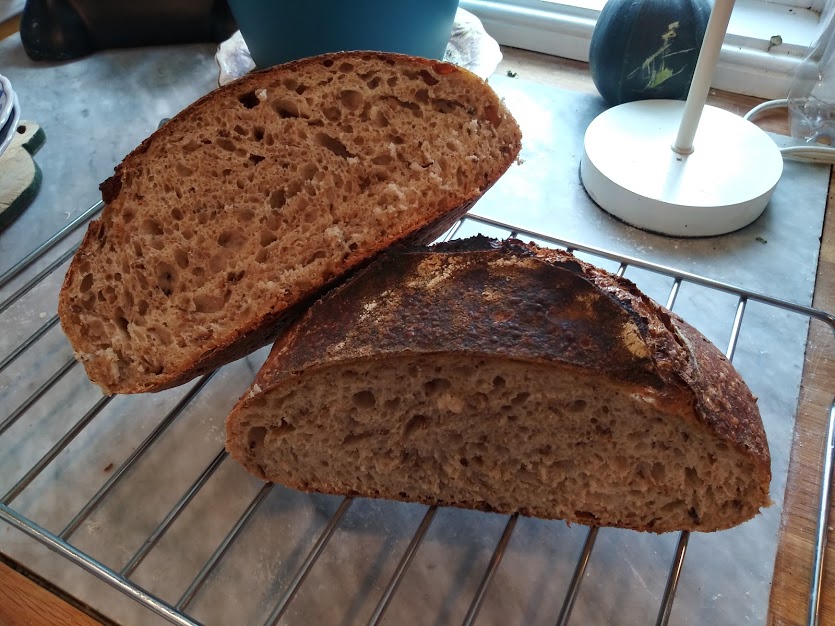Hi all, so I did try to bake a sourdough loaf using spent beer (brewer’s) grains. I basically followed the approach outlined in the Perfect Loaf recipe that Abe linked, but made some adjustments due to ingredients on hand and quirks about how things worked out.
So I started with my San Francisco sourdough starter, which is APF-based, I created a pretty thick mixture with about 25-30 grams (I didn’t really measure) of starter from the fridge, and then 1/2 cup of APF and 1/4 cup of water. Left that from late morning to the next morning, by when it had more than doubled and was nice and spongy.
I cut amounts in the Perfect Loaf recipe by half because there are only two of us eating here and one doesn’t eat much bread, so I generally don’t do recipes that create two loaves. My spent grains were 8 oz Caramel 80L, 8 oz Victory, and 4 oz Carapils used to brew a batch of Imperial Pale Ale. They were wet so I reduced the water by more than 50% as recommended in the recipe. Here’s what I used:
50 g King Arthur Whole Wheat Flour
25 g King Arthur Pumpernickel Whole Rye Flour
425 g Bread Flour (I get it from a commercial bakery that started selling retail to the home baking community during the first phase of the shutdown so I’m not sure exactly what the source or protein percentage is)
350 g water (room temperature, probably about 76-80 F)
10 g salt
100 g starter/levain (did not measure exactly but took more than half from a container that had 188 g in it)
125 g spent beer grains (mine were wet, not quite like soggy porridge but definitely wet)
I combined all the flours with the water and mixed until it was a shaggy dough without dry bits of flour. Left it to autolyse. Autolyse lasted a bit more than two hours for external (honey-do) reasons.
After the autolyse, I added the levain and worked it in by pinching and pulling and folding until it was well mixed. Rested 15 minutes, then added the salt and again pinched it into the dough until it was all well mixed. Then let it rest another 10 minutes.
Then the mixing, by hand, in the bowl, ten minutes of pulling, stretching, and folding.
For the bulk fermentation, I let it rest for half an hour, then did the first of a series of four stretch and folds. Second stretch and fold after a half hour, and in that one I folded in the spent beer grains, so it looked like this:
The third stretch and fold followed after an hour, and then the fourth after another half hour. By that point the dough had pretty much doubled in size:
Emptied it onto the work surface and pre-shaped it, leaving it for about 20 minutes to rest. It was a fairly “wet” dough but very resilient and forgiving. After 20 minutes I shaped it into a boule and left it in a round, linen lined banneton on the counter for about an hour and a half, and then overnight in the fridge.
This morning it looked like this:
Baked it in a Le Creuset dutch oven (size F) with the lid on, in what I hope was a 500 F (possibly 450 F) oven for 25 minutes, then lid off for 25, extended to 30 minutes with the temperature down to what I hope was 375-400 F. I say that I hope that was the temperature because the oven control is horribly unreliable as far as temperature goes and I have calibrated it approximately using an internal oven thermometer, but I’m never 100% sure.
The old Le Creuset dutch ovens have high sides (not like the Lodge cast iron ones with the low bottom and high top) so the crust did not get as chocolate-brown as the Perfect Loaf example, but it toasted up nicely:
Overall I was pleased with the outcome: the crust is crackly and chewy, the crumb is open and soft with a pleasant whole-grain and toasted bran flavor cross-cut with slight sour notes. I’d do this again (which is good because I have like 8 125 g packets of spent grains in the freezer!).
Sorry, I have run on at the keyboard a bit here. But thanks for the encouragement to try this!
